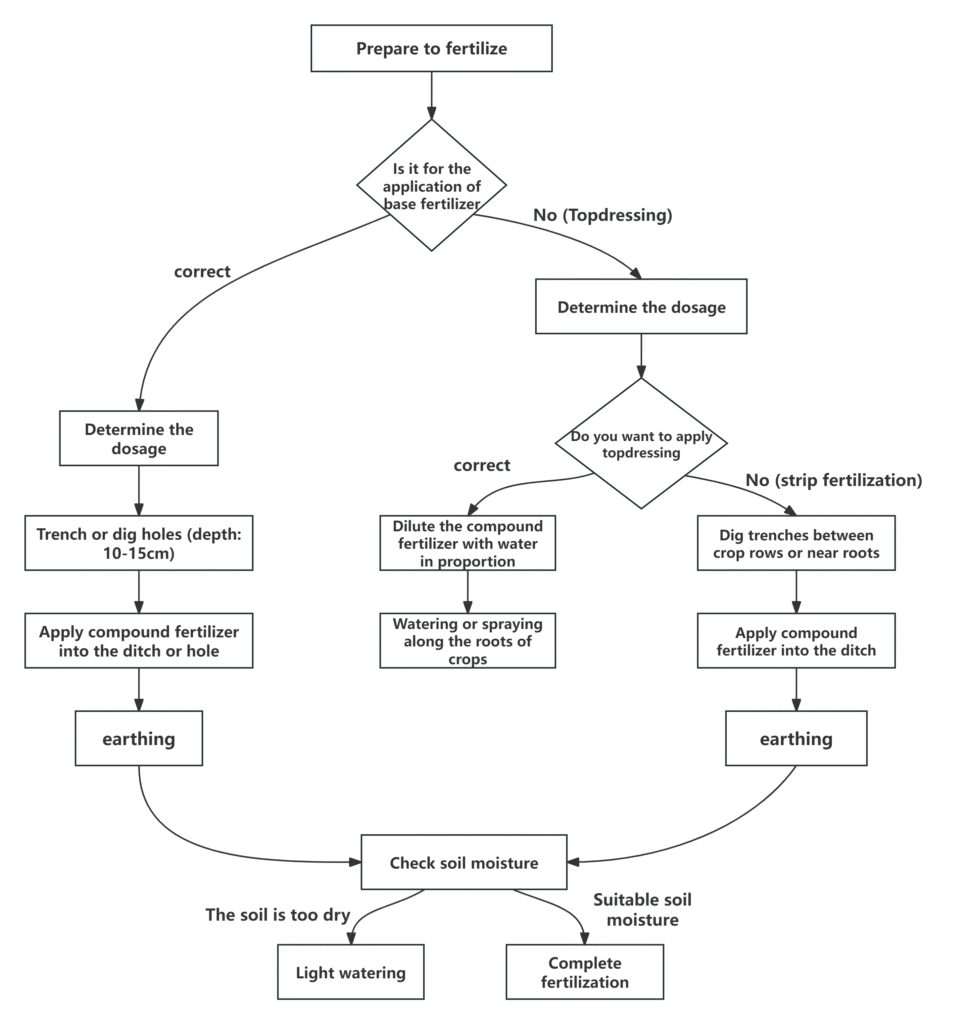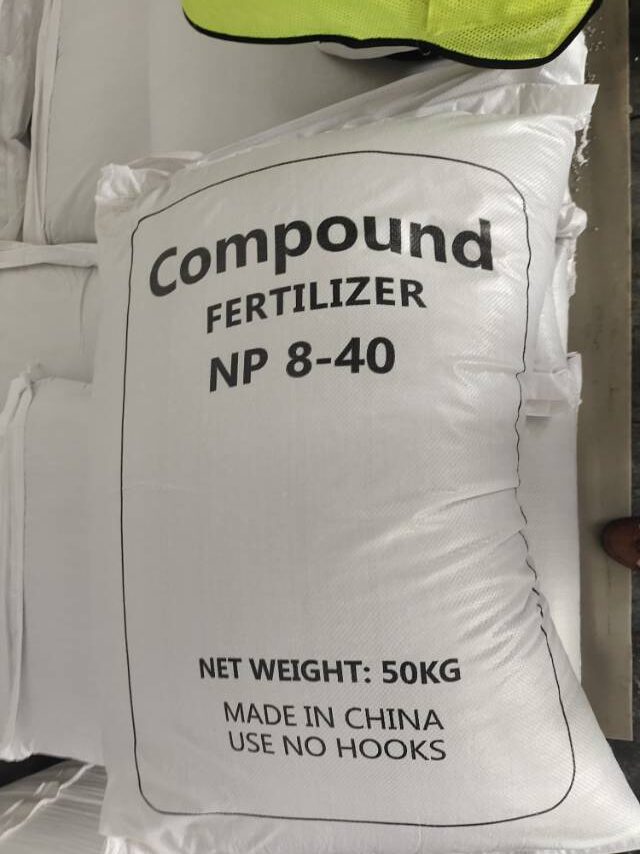High-phosphorus NP 8-40 boosts crop growth, but improper use wastes fertility. Follow these tips for optimal results:
1. Soil & Crop Compatibility
Suitable soils:
Prioritize phosphorus-deficient soils (e.g., red/yellow soils) to replenish phosphorus.
Avoid:
Phosphorus-rich soils (causes accumulation and soil hardening).
Crop stages:
Not recommended: Seedling stage (high phosphorus inhibits zinc/iron absorption, yellowing leaves); potassium-heavy crops (e.g., watermelon, sugarcane—add potassium fertilizer).
Recommended: Mid-late stages (flowering, fruiting, tuber expansion) when phosphorus demand peaks.
Crop adaptation table
| Crop/Stage | Is it applicable | Notes |
| Seedling stage (universal) | Not Applicable | Easy to cause yellowing of leaves |
| Fruit tree swelling period | suitable for use | Improve fruit plumpness |
| Watermelon/sugarcane | careful | Should be used in conjunction with potassium fertilizer |
| Potato/sweet potato swelling period | suitable for use | Promote tuber development |
2. Mixing & Application Do’s & Don’s
Mixing taboos:
Never mix with alkaline fertilizers (e.g., wood ash, quicklime)—forms insoluble phosphorus compounds.
Avoid uncompleted manure (organic acids “lock” phosphorus). If mixing, use composted manure at ≤1:3 ratio.
Application rules:
No foliar spraying (40% phosphorus burns leaves—use soil application only).
Avoid broadcasting. Use band/drill application (10-15cm deep) for base fertilizer; furrow application with soil coverage for topdressing.
Process diagram for correct application steps

3. Dosage & Timing
Dosage:
Fruit trees: 500-1000g/plant (adjust by age; reduce for seedlings).
Vegetables: 10-15kg/acre (less for leafy veggies).
Tubers (potatoes, sweet potatoes): 15-20kg/acre (split into 2 applications).
Overuse risks: Root burn, leaf scorching, yield loss.
Timing:
Avoid rainy/muddy conditions (leaching risk). Apply when soil is slightly dry post-rain; light watering after application.
Rotate with balanced fertilizers (e.g., 15-15-15) every 2-3 seasons to prevent nutrient imbalance.
4. Storage
Store sealed in dry, ventilated areas (moisture causes caking).
Keep away from acids (e.g., ammonium sulfate), food, and seeds.
Shelf life: 2-3 years unopened; use within 3 months after opening. Test expired products before use.
Packaging bag picture

5. Summary
Focus on “soil fit, stage suitability, careful mixing, and controlled dosage.” Avoid these pitfalls to maximize NP 8-40’s effectiveness.
